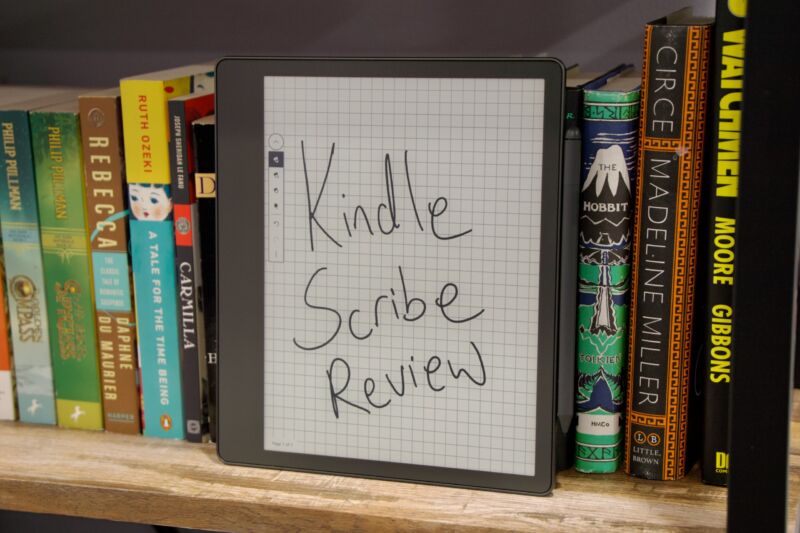
Enlarge / Amazon's Kindle Scribe e-reader. (credit: Andrew Cunningham)
Amazon's Kindle e-readers have been around for 15 years, and they've remained steadfastly focused on displaying books for reading (and, to a lesser extent, audiobooks). Input has never been something they've been particularly concerned with. The devices' poky processors and laggy touchscreen keyboards are best suited for short annotations or looking up the name of a book or author—not for writing anything longer than a sentence or two, and certainly not for taking notes or jotting down idle thoughts.
That's the main change to the Kindle Scribe, the newest and most expensive member of the e-reader family. It's the first Kindle with its own purpose-built pen accessory and a 10.2-inch screen that's more suitable for input than the 6-to-7-inch screens on other Kindles. It doesn't come cheap—it starts at $340 and goes up quickly from there. It's over three times as expensive as the Kindle Paperwhite and not much cheaper than a baseline iPad and Apple Pencil combo. But it's also trying to do some new things that older Kindles aren't built for.
The problem for the Scribe is that the Kindle's software, likewise laser-focused on the reading experience and not the input experience, doesn't feel robust enough to deliver on the pen's promise. The actual handwriting experience is great, which gives us some hope that further updates could make this device more useful. But as it is, most of the things it's trying to do are things that an iPad is better at, and they come at the cost of some of the regular Kindle's best features.
Read 23 remaining paragraphs | Comments
